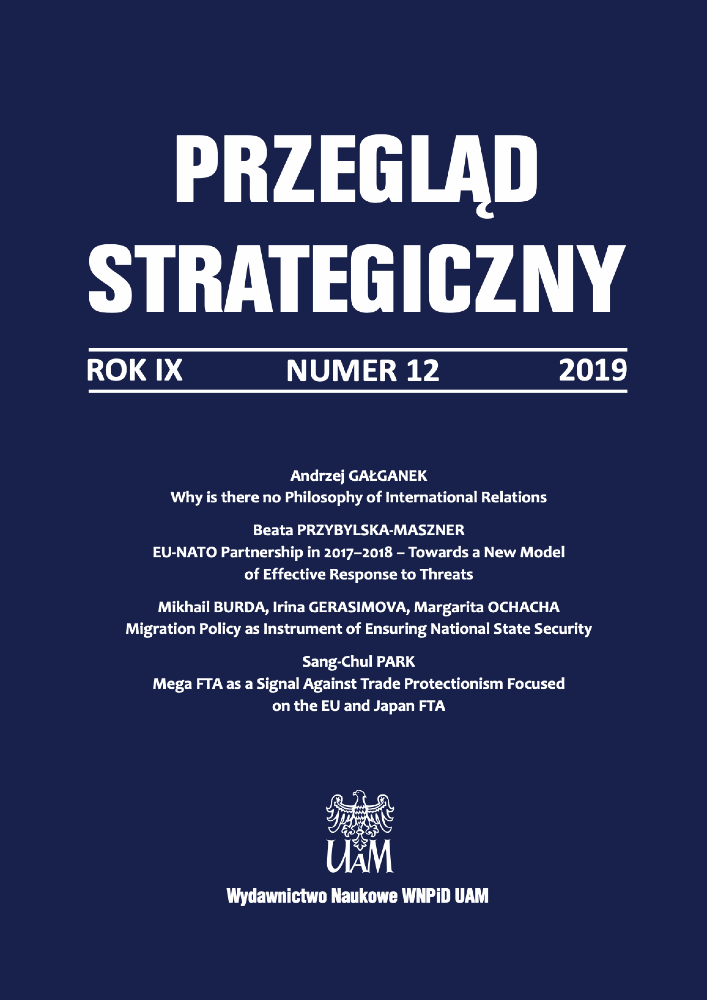Abstrakt
Chiny są aktualnie wiodącą potęgą gospodarczą, notującą w latach 1979–2018 pięćdziesięciokrotny wzrost produktu krajowego brutto (PKB) do poziomu 13,2 bln USD. Jest to 10-krotność PKB Rosji i prawie 30-krotność PKB Polski. Nominalnie PKB Chin jest drugim na świecie po Stanach Zjednoczonych. Autorzy nie tylko omawiają czynniki chińskiego fenomenu, ale także próbują przeanalizować główne elementy chińskiego sukcesu w rozwoju gospodarczym. Celem artykułu jest kompleksową analizą kluczowych cech chińskiej strategii rozwoju gospodarczego. Autorzy badają kluczowe cechy chińskiej strategii rozwoju gospodarczego, priorytetowe kierunki jego modernizacji: reformy administracji publicznej i państwowe regulacje gospodarcze, a także analizują czynniki przyciągania inwestycji krajowych i zagranicznych w celu osiągnięcia przełomu w rozwoju społeczno-gospodarczym. Autorzy zastosowali metodę analityczną, porównawczą, instytucjonalną i socjologiczną.
Bibliografia
Agriculture alue added (% of GDP) (2016), http://data.worldbank.org/indicator/NV.AGR.TOTL.ZS?locations=CN (18.06.2018).
Alekseev M. (2012), Comparative analysis of the development of Russia, the USA, Europe and China, “EKO” – Novosibirsk, № 6.
Babaeva Z. Sh. (2015), China’s economic development: benchmarks and ways to achieve, “Economy and Entrepreneurship”, № 3 (56–2), part 2.
Babaeva Z. Sh. (2015), Innovations: the driving force of economic growth in China, “Economy and Entrepreneurship”, № 3 (56–2), part 2.
Berger J. M. (2014), The New Stage of China’s Economic Development (Towards the Results of the 3rd Plenum of the CPC Central Committee of the 18th Convocation), “Problems Dal. East.”, No. 2.
Berger Y. M. (2009), China’s Economic Strategy, Forum, Moscow.
Chen Jiagui (2009), China’s economy. Analysis of the state and development prospects, Per. with whale, Science, Moscow.
Chen Qiang (2012), The state in the innovation economy of China, Delta, Bryansk.
China Economic Outlook (2018), https://www.focus-economics.com/countries/china (25.06.2018).
China Statistical Year Book (2011), China Statistical Press, Beijing.
China’s GDP grew by 15 times in 30 years (2017), http://russian.people.com.cn/31518/6555668.html (19.03.2018).
Chinese Automobile Miracle (2007), http://expert.ru/magazine_auto/2007/07/kitayskoe_avtomobilnoe_chudo/ (15.03.2018).
Gao Ying (2008), Features of the formation of high-tech industries in China, Author’s abstract. diss....cand. econ. sciences.
Granet M. (2008), Chinese civilization, Algorithm, Moscow.
Grinin L. E. (2014), The Chinese model and the prospects for the leadership of China in the world, at: Where the age of globalization is heading, Volgograd.
In China, the session of the main advisory body was completed (2018), https://ria.ru/world/20180315/1516398351.html (15.03.2018).
Ivanov S. A. (2014), Special economic zones in China: lessons for Far Eastern policy, “Russia and the APR”, No. 4.
Juan Ya. (2012), Capitalism in Chinese. State and business: Trans. from English, 2nd ed., Alpina Publisher: Moscow School of Management, Moscow.
Karelina E. A. (2015), Economy of China in the system of modern world economic relations in the light of the prospects for the development of Chinese-Russian economic relations, “Economy and Entrepreneurship”, No. 3 (56–2), part 2.
Karelina E. A. (2015), Features of the socio-economic development of the PRC in the twentieth century, “Bulletin of the Institute of Economics RAS”, № 2.
Kondratiev V. (2013), Developed in China, “Direct investments.”, № 1/2.
Lee Sin (2013), The triangle “China – Russia – USA” in modern conditions, “Russia and modern world”, No. 4.
Moiseev V. V. (2017), Why Russia can not yet become a prosperous country, Moscow–Berlin.
Mozias P. M. (2015), Economic growth in China in 2014 and forecast for 2015, “Problems Dal. East.”, No. 1.
Nasibov I. A. O. (2012), Scientific and technical potential of China: results and development prospects, “World Economy and International Relations”, No. 10.
Portyakov V. Ya. (2014), On the issue of the complex power of China: approaches to the assessment, structure, dynamics, prospects, “China in world and regional politics: Past and Present”, Issue 19.
Regzenova D. B.-O. (2010), The basic principles and essence of the reforms of Deng Xiaoping, https://cyberleninka.ru/article/v/osnovnye-printsipy-i-suschnost-reform-den-syaopina/ (15.06.2018).
Sazonov S. L. (2005), The role of transport in the development of China, “Asia and Africa today”, No. 1.
Smertin Yu. G. (2005), China and Africa: mutual interest, “Historical, philosophical, political and legal sciences, cultural studies and art criticism. Questions of theory and practice”, No. 5-2 (55).
Smirnov D. (2004), Deng Xiaoping and the modernization of China, “Problems of the Far East”, No. 5.
Summit SCO in Qingdao (2018), http://russian.people.com.cn/n3/2018/0615/c31521-9471752.html (17.06.2018).
The population of China (2018), http://countrymeters.info/en/China (27.06.2018).
World Development Indicators: Gross Domestic Product (2017), http://gtmarket.ru/ratings/rating-countries-gdp/rating-countries-gdp-info (29.06.2018).
XVIII Congress of the CPC on the tasks of building a moderately prosperous society (2012), http://mir-politika.ru/3319-xviii-sezd-p-o-zadachah-postroeniya-srednezazhitochnogo-obschest-va.html (30.06.2018).
Zeng Chao (2015), The use of public-private partnership in construction in the People’s Republic of China, “Zhurn. legal and economic research”, No. 1.

